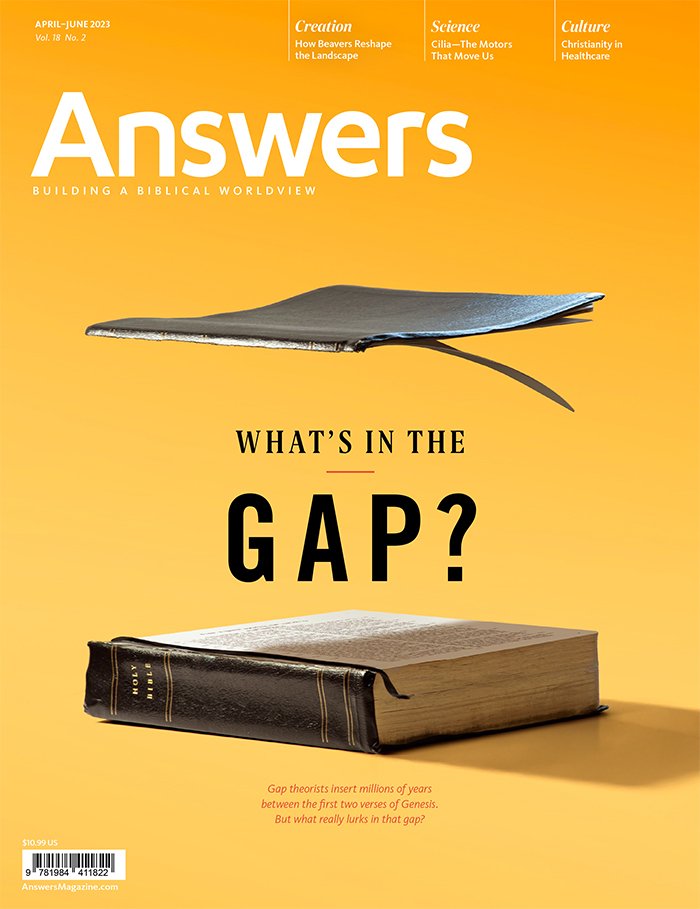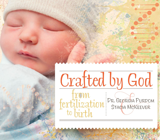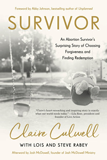Tie-Dye Heart: Adoption
Life with adopted and foster siblings brought the author close to the brokenness of a fallen world—and to part of God’s plan to help redeem that brokenness.
Several years ago, I spent the summer working as a camp counselor for high school students. Each Tuesday, we paraded our campers down the gravel camp paths to the yellow craft barn that stood in a mowed field. Tuesday was tie-dye day, and the blue, green, red, and yellow dye had a way of staining everything nearby—including my hands. No matter how long I scrubbed, colors remained in the lines of my palms and under my fingernails for days afterward.
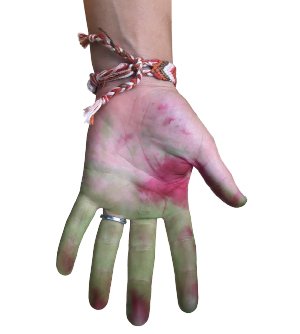
Tie-dye craft days during summer camp stained my hands for days.
A few weeks into the summer, a camper shared with me how she was struggling to feel like her story mattered because she didn’t have any life-changing moments showing how God was at work in her life.
Her confession got me thinking about my own story, and I realized that I shared her sentiment. Growing up as a pastor’s kid with our small-town church as my second home, I knew the Lord intimately from a young age. And though I knew I was a sinner in need of grace, I felt like I didn’t have a dramatic testimony that showed a clear picture of redemption.
At the end of the summer, as I moved back home to my family and the colors on my hands gradually faded, God opened my eyes to the ways he had been working in my life all along. I realized that, like the stains from the craft barn each week, my heart has been tie-dyed—marked by experiences, hurts, and joys, many coming from within the walls of my own home.
My family has never been ordinary. We’ve always been a mix of foster kids and adopted kids, along with my biological brother and me. Each of our struggles made for a messy family portrait that I haven’t always considered a masterpiece. But after that summer at camp, I began seeing the rainbow of hues these kids left on my heart as a picture of our heavenly Father’s redemption in this fallen world.
Stained
Children are neglected, abused, abandoned, or orphaned every day. In fact, in 2021, a UNICEF report estimated that nearly three million children lived in some form of alternative care (residential, foster, or kinship care) around the world.1 In the US alone, over 400,000 babies, children, and teens were in the child welfare system on any given day in 2022.2 And with only about 210,000 foster families in the United States, some advocacy sites fret that the system is in a crisis.3 It’s no wonder we commonly see signs along the side of the road or on grocery store community boards begging the passerby to “Become a foster parent!”
Those signs are a reminder that our world is broken. Foster care and adoption were never part of God’s original plan for families when he created Adam and Eve in Eden and commanded them to be fruitful and multiply (Genesis 1). Yet because of their sin, no child ever born on this earth has experienced a perfect family. Today, foster care and adoption are only necessary because we live in a sin-cursed world where families break and children are hurt because of selfishness, addiction, violence, and death (Genesis 3).
Despite being evidence of a shattered world, foster care and adoption are close to God’s heart as an imperfect way to help redeem brokenness. Throughout the Bible, Jesus shows that he cares deeply for children (Matthew 18:5, 19:14; Mark 9:36). He calls us to care for the “widows and the orphans” (James 1:27) and “the least of these” (Matthew 25:40). Twenty years ago, my parents answered that call when they were licensed to be foster parents.
They couldn’t have guessed how their decision to help heal the suffering of other children would affect their own child, inevitably splattering my heart in a messy but beautiful canvas of color.

Blue—Sadness
In 2003, the first of eventually 13 foster siblings stepped into my family home with nothing more than a grocery bag of belongings. Immediately, life was different. From then on, our front door constantly revolved from social worker visits. Temper tantrums and tears became our new family language. And my parents, with dark circles under their eyes, had to learn how to adapt and react to various trauma behaviors while also caring for their own two biological children.
After spending eight months with us, two of my foster siblings, a sister and brother, were reunified with their biological mom. Though the ultimate goal of foster care is reunification, we grieved saying goodbye to these two. We not only loved them deeply, but we also knew we were sending them into a situation filled with unknowns. This heartbreak is a common reason that people resist becoming foster parents. “It’s worth it, though,” I often heard my mom say in response. “For however short a time, we get to show the love of Christ to a child who might never otherwise experience it. That’s always worth it.”
This brother and sister pair spent only a short time with their biological mother before being put back into the system with a different foster family. Their birth mother’s rights were soon terminated completely. The courts were in favor of placing them with someone who shared their Native American heritage, but my parents knew they were supposed to be with us. For the next two years, my parents fought for custody. I was eight when they officially joined our family forever through adoption.
They came bearing new wounds that hadn’t been there when they’d lived with us before. Though they now had a new last name, a safe home, and a family to love them, their trauma didn’t just disappear. My new six-year-old sister spent the first several weeks refusing to speak. Her younger brother’s ribs were visible through his nearly translucent skin, and he was the angriest three-year-old I’d ever met.
Months later, as my sister and I played together, she shared stories that neither of our young minds could comprehend: raising her younger brother on her own, getting locked in the garage by unloving foster parents if they misbehaved, wondering if they’d ever find a family to love them.
Her traumatic past surfaced as she slept in the bed next to mine. Many nights, I’d wake to her screaming and thrashing. I’d race upstairs to get my mom, who spent the next several minutes trying to wake her, while I sat nervously on the edge of my bed, heart racing, crying silent tears for the monsters that chased my sister in her sleep.
This past Thanksgiving, her monsters were a distant memory as she lovingly rocked her own infant son to sleep at our parents’ house. In that moment, I realized my mom was right—all the heartache and sadness had been worth it.
Green—Envy
As I grew up and witnessed my parents graciously respond to one emotional explosion after another, I promised myself I’d do everything possible to avoid adding more stress or strife to our already chaotic home.
When I think about those years now, I remember feeling dizzy from the never-ending roar of my own mind, unable to grasp any feeling long enough to give it a name. I was drowning beneath the impossible standard of perfection I created for myself. Since everyone else seemed to be wrestling with something, I vowed to always have it all together. But I spent every day jealous of my siblings for how they were allowed to struggle and for the attention they in turn received from my parents.
The jealousy grew into resentment. As I entered high school, I mourned a loss I hadn’t even known was living inside me—the loss of a normal childhood. I grieved for a life I’d never have. A life where I wasn’t walking on eggshells in my own home, knowing one wrong word could lead to an angry outburst from a sibling. A life where I didn’t wonder what I’d come home to after school—a sibling sent home by the principal (again), another shattered window, something else stolen from my bedroom. A life where the most interesting thing that might have happened on a Tuesday was the laps I ran at soccer practice. But all this turmoil happened deep down, buried beneath the helpful daughter and sister façade I wore as armor against the anger waiting just below the surface.
All my pretending finally caught up to me one night at dinner when one of our preschool-aged foster boys—an expert at pushing my buttons—was seated beside me. His favorite game involved poking me with his dirty fork. This time, I’d had enough. “I’m so sick of this!” I exploded, shoving my chair back and storming away from the table. My dad found me in tears on the bathroom floor a few minutes later.
“It’s not fair!” I shouted. “Why do you and Mom feel like it’s your mission to rescue every broken kid? Why can’t our family just be normal?”
He wrapped an arm around me and answered my mostly rhetorical question. “Because as believers, God calls us to care for the widows and the orphans. And he’s called our family to do that by welcoming their brokenness into our home.”
I thought about his answer a lot as we continued to take in hurting children. I began seeing my siblings the way God did—as children, created in his image, desperately hurting from choices that had been made for and against them. They hadn’t done anything to deserve what they’d experienced. And now I was privileged to have a front-row seat to watch God at work through their struggles—and through the love my family could offer them.
Adopted and foster children have needs that require immense amounts of love, grace, and attention. Not everyone is called to foster or adopt, but we are all called to do something. Here are some practical ways you can serve foster or adoptive family members.
Foster/adoptive parents.
If you know foster or adoptive parents, you can support them by offering respite care or hosting a baby shower. You can also provide the family with meals, clothes, and diapers, or even bless them financially. If you know a family that is fostering, has recently adopted, or is in the process of adopting, ask if you can bless them in any specific ways.Biological parents.
Perhaps more than anyone, struggling biological parents need encouragement and support to parent well. You can offer to be a mentor, babysit their children, provide clothes for job interviews, or make them a meal.Biological children.
People like me—the biological siblings—are sometimes left out of the conversation. You can help biological children feel seen and supported by providing mentorship, asking how they are really doing, taking them out for lunch, or offering your home as a refuge from the chaos for a few hours.The entire family.
Prayer is one of the most important ways to support every person in a foster/adoptive family. Let them know you’re thinking of and praying for them by sending an encouraging note or text. It may be exactly what they need to hear. Ask if you can pray for any challenges.
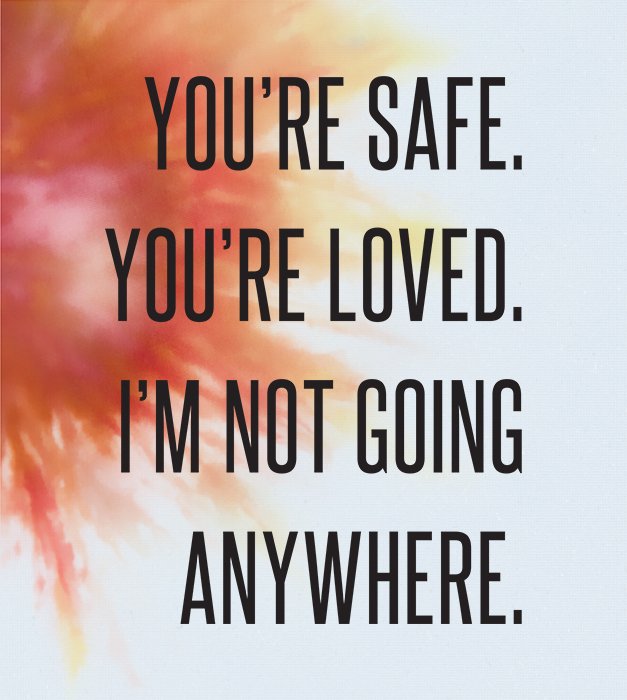
Red—Anger
A few months later, I came home from school one chilly afternoon to bloodcurdling screams. This was not an unusual sound in my house, so I was barely fazed as I searched for the boy responsible for the cries. As I walked upstairs, I heard my mom’s calming voice in each pause between the screams. When I reached my foster brother’s bedroom, tears filled my eyes.
Sitting cross-legged on the floor, my mom had the thrashing preschooler wrapped tightly in her arms. When she was struck by his flailing fists or feet, she only held him tighter, gently rocking back and forth. Her cheeks glistened with her tears and his as she whispered in his ear, “You’re safe. You’re loved. I’m not going anywhere.”
Years after he moved home to his biological family, this image stuck with me. His broken mind had been unable to accept the comfort and assurance he desperately needed. The fear that had been seared deep into his bones at such a young age burned in these anguishing moments of rage.
As much as we wanted to put him back together, as hard as we tried to reassure him that he was safe, his suffering could not be undone. We couldn’t heal his angry wounds—or keep them from bleeding onto us.
But his wounds remind me of another’s wounds that can heal both this boy’s brokenness and mine. Through the blood Christ shed on the cross, we are healed. On this earth I may never know how my foster brother’s story ends; still, I cling to the hope that I serve a God who heals the brokenhearted and binds up wounds (Psalm 147:3) through heavenly adoption.
Yellow—Joy
When we were young, my family took an annual spring break trip to the beach. We loved playing in the sand and waves for hours each day, exploring our rented beach-front house and finding ice cream shops that we’d easily convince our dad to take us to after dinner.
A few days after returning home from one trip during my junior year of high school, our sunburns nearly faded, the foster care agency called. Several hours later, a social worker and two sleeping children, a two-year-old boy and six-month-old girl, arrived at our front door.
The boy knew exactly two words: “ball” for every object and “mom” for every person. Both kids were incredibly difficult to put to sleep, perhaps because the night they were put in care, they were taken from their beds, still asleep, and put into the social worker’s car to be delivered to us. When they woke the next morning, they were in a strange house with strangers surrounding them.
Today, my littlest sister is seven and still asks for someone to lie in bed beside her until she falls asleep. When I visit home, this is my favorite big sister job. After we laugh through a game of Uno, I chase her into her pajamas, and then we sit together on her bed, where she reads me a bedtime story. “The end,” she finishes with a flourish, giggling. She grins up at me, and I can’t help but kiss the tip of her nose. I smile back, feeling the press of tears against the back of my eyes as I’m suddenly overwhelmed with love for this girl who brings so much joy to my life.
A few minutes later, with her fingers wrapped tightly around my own in the dark, I pray silently over her future and all the dreams I have for her life. Someday, she might grow up to change the world. But for now, I’m thankful for the ways she and the rest of my siblings have changed mine.
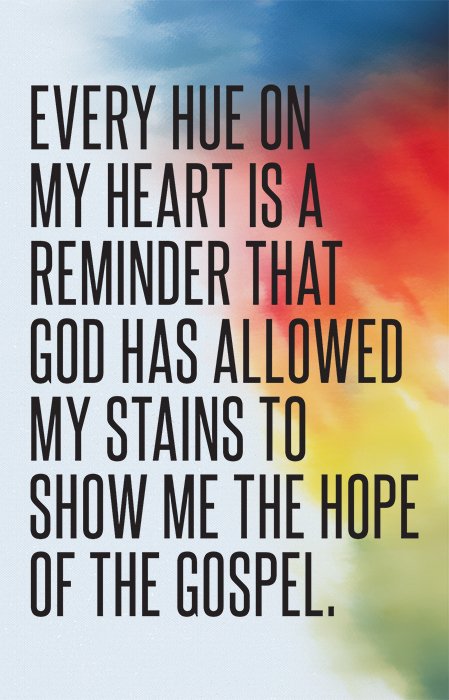
Tie-Dye
Above my desk I’ve pinned a picture of my family from one of the last times we were all together. My parents are smiling in the middle, their tired eyes sparkling as they hold the two youngest.
Lined up on either side of my parents, my other siblings smile at the camera with laugh-lined eyes. I can almost hear their laughter, and it brings back memories of our childhood—chasing seagulls barefoot through the sand or bundled up like human marshmallows, playing in the first snow of the year.
In the photo, I’m nestled between an adopted sister and brother. My chin rests on my sister’s shoulder as I look toward the middle of our family huddle, adoration on my face.
My family is a variety of skin tones, body shapes, and heights. We’re messy, and we don’t match. Five years after the last adoption, the effects of trauma still wreak havoc on our family. There are days when I’d do anything to go back and give all of us a normal childhood, though I don’t even know what normal is—not on this earth.
But for every day of shouting, tears, and crying out for healing, there is one filled with joy and the promise of renewal. Like tie-dye, every hue on my heart is a reminder that God has allowed my stains to show me the hope of the gospel—that God stepped into this fallen world to offer adoption and eternal life through Christ’s work on the cross.
I’m thankful to have been so close to the brokenness of the world because the rainbow of colors tells a story of his redemptive power—and the promise of his ultimate redemption to come in the new heavens and earth.

My beautiful, mismatched family. That’s me second from the right.
Answers Magazine
April–June 2023
Gap theorists insert millions of years between the first two verses of Genesis. But what really lurks in that gap?
Browse Issue SubscribeFootnotes
- "Around 2.9 million children are estimated to be living in residential care worldwide," UNICEF, December 2022, https://data.unicef.org/topic/child-protection/children-alternative-care/#:~:text=Globally%2C%20an%20estimated%202.9%20million,in%20residential%20care%20in%202021.
- "Key Facts and Statistics," National Foster Care Month 2022, https://www.childwelfare.gov/fostercaremonth/awareness/facts/.
- Dr. John DeGarmo, "America’s Foster Care Crisis: The Shortage of Foster Parents for Children in Crisis," Medium, January 31, 2022, https://drjohndegarmo.medium.com/foster-care-crisis-in-2022-americas-shortage-of-foster-parents-a95ed2929579.
Recommended Resources

Answers in Genesis is an apologetics ministry, dedicated to helping Christians defend their faith and proclaim the good news of Jesus Christ.
- Customer Service 800.778.3390
- © 2024 Answers in Genesis



